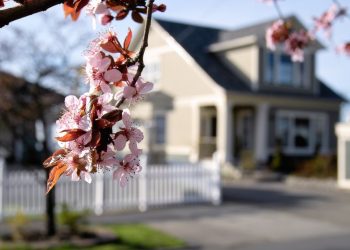Climate change and environmental issues aren’t going away anytime soon, so many of us are considering how we can contribute to positive change. Living an environmentally-conscious lifestyle will not only reduce your carbon footprint, but can save you money in the long run.
Here are five easy steps you can take to embrace eco-friendly living in your home:
Go Paperless
This is one of the easiest, quickest steps you can take that’ll have an impact on environmental sustainability. If you don’t already have paperless billing options set up across the board, now is the time to do so. One study shows that if one in five households in the U.S. committed to online bill pay and enrolled in paperless billing and banking, the collective environmental impact would result in nearly 2 million trees preserved each year.
Almost every service provider offers the option for paperless billing—you might just have to ask to make sure you’re enrolled. Some services will still send you paper statements for online transactions unless you specify you would like to be electronic only, so double-check on exactly what you’re signed up for. Research discontinuing other paper services you might take part in from month to month, such as magazine subscriptions you no longer read, mailing lists you don’t need to be on or similar extraneous paper deliveries and uses.
Recycle
Recycling as another easy, inexpensive way to move your household toward a more eco-friendly lifestyle. Implement a reduce-reuse-recycle mindset at home and prevent unnecessary waste by opting to reuse items that you might be planning on throwing away. Create a system that works best for you and your family to establish a recycling program that’ll last.
Depending on where you live, you may already have a curbside recycling service in place. If you don’t, research your local options and educate yourself on the proper guidelines for recycling. Reach out to your local waste management service to learn what can be recycled and how it needs to be sorted. Don’t forget about commonly trashed items that are usually recyclable, like wrapping paper, envelopes, birthday cards, phone books and used toilet paper rolls.
Increase Energy Efficiency
Energy efficient light bulbs, like LEDs, have been around for some time, but many households still haven’t made the switch despite major energy savings. Data shows that LED light bulbs use between 75-80 percent less energy than traditional light bulbs, which can save you as much as $75 per month on energy expenses. Taking advantage of simple swaps like this throughout your home can result in lower utility costs and reduced energy consumption.
As you update different areas of your home over time, consider making the switch to energy efficient appliances like dishwashers, washing machines and refrigerators. These types of appliances are becoming increasingly available at more affordable price points.
Insulate Properly
Investing in efficient insulation is a great way to reduce energy consumption and improve your home’s eco-friendliness. Warm and cool air can easily escape a home that’s not properly insulated, which means you’ll spend more money on heating and cooling. Weatherstripping doors and windows is an easy and cost-effective way to keep the heat inside where it belongs. Unless your home was specifically constructed with energy efficiency in mind, you probably have room for improvement when it comes to insulation and reducing your energy bills.
Go Local
The farther an item has to travel to get to your front door, the less eco-friendly it is. Within your lifestyle and budget, try to support local artisans, businesses and farmers whenever possible. Not only will you attain fresh food and unique products, but you’ll also help to stimulate your local economy and reduce your carbon footprint at the same time.
Implementing more eco-friendly practices in your home doesn’t need to be a daunting task. Look for simple, cost-effective changes you can make to reduce your energy expenses and carbon footprint. There are, of course, many other ways to decrease the impact your home has on the environment. If you’ve already taken all of the above steps, research other options like solar panels, composting, green building materials and/or connecting with a sustainability consultant!
Brentnie Daggett is a writer and infographic master for the rental and property management industry. She loves to share tips and tricks to assist landlords and renters alike. To learn more about Daggett, and to discover more great tips for renters, visit www.rentecdirect.com.
This article first appeared on RISMedia’s blog, Housecall.











